1. Kadesh—the Benediction
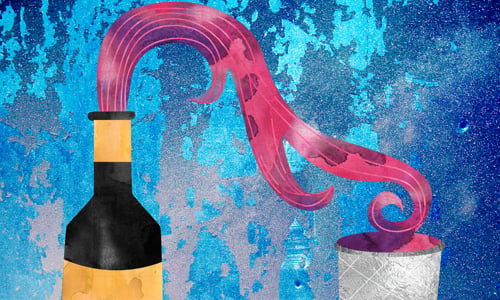
The Seder service begins with the recitation of kiddush, proclaiming the holiness of the holiday. This is said while holding a cup of wine, the first of the four cups we will drink (while reclining) throughout the Seder.
The Four Cups of Wine
Why four cups? The Torah uses four expressions of freedom or deliverance in connection with our liberation from Egypt.1 Some link them to the four great merits the children of Israel had in exile: (1) They did not change their Hebrew names; (2) they continued to speak their own language, Hebrew; (3) They remained highly moral; (4) They remained loyal to one another.
Wine is used because it is a symbol of joy and happiness.
More reasons for the four cups
Why We Recline
When drinking the four cups and eating the matzah, we lean on our left side to accentuate the fact that we are free people. In ancient times only free people had the luxury of reclining while eating.
2. Urchatz—Washing
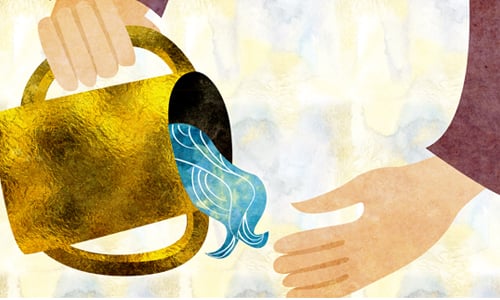
We wash our hands in the usual, ritually prescribed manner, as is done before a meal, but without the customary blessing.
The next step in the Seder, Karpas, requires dipping food into water. Jewish law specifies that certain wet foods be eaten with a utensil or that one’s hands be purified first by washing. On the eve of the Seder, we choose the less common (but more ideal) observance to arouse our children’s curiosity.
3. Karpas—the “Appetizer”
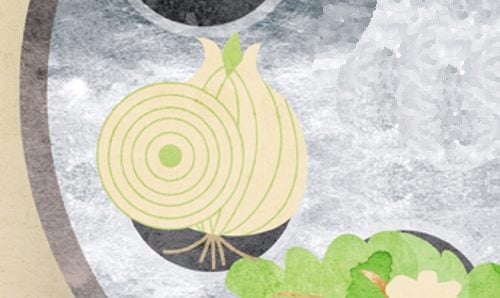
A small piece of vegetable (an onion or boiled potato in Chabad tradition) is dipped into salt water and eaten (after reciting the blessing over vegetables).
Dipping the karpas in salt water (after having washed our hands) is part of a series of acts intended arouses the child’s curiosity.
The Hebrew word karpas (parsley), when read backwards, alludes to the backbreaking labor performed by the 600,000 Jews in Egypt. (The last letter, samech, has the numerical equivalent of 60, representing 60 times 10,000, while the remaining three Hebrew letters spell perech, “hard work.”)
4. Yachatz—Breaking the Matzah
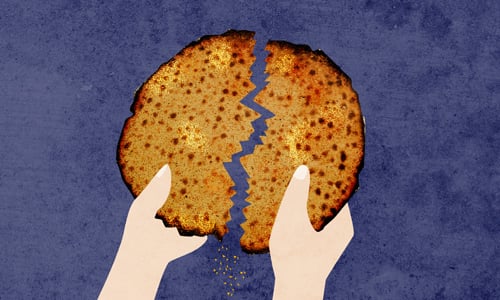
The middle matzah on the Seder plate is broken in two. The smaller part of the middle matzah is returned to the Seder plate. This broken middle matzah, the “bread of poverty,” remains visible as we tell the story of Exodus (see step 5) and will be eaten shortly thereafter. The larger piece is put aside for later use as the afikoman (see step 12). This unusual action of breaking the matzah not only attracts the child’s attention once again, but also recalls G‑d’s splitting of the Sea of Reeds to allow the children of Israel to cross on dry land.
5. Maggid—the Haggadah
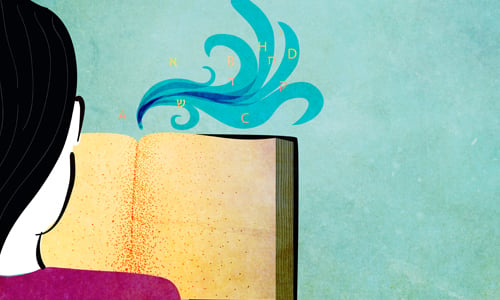
At this point, the poor are invited to join the Seder. The Seder tray is moved aside, a second cup of wine is poured, and the child, who by now is bursting with curiosity, asks the time-honored question:
“Mah nishtanah ha-lailah hazeh mikol ha-leilot? Why is this night different from all other nights?” Why only matzah? Why the dipping? Why the bitter herbs? Why are we relaxing and reclining as if we were kings?
The child’s questioning triggers one of the most significant elements of Passover, which is the highlight of the Seder ceremony: reading the Haggadah, which tells the story of the Exodus from Egypt. The answer includes a brief review of history, a brief narrative of how how Abraham rejected idolatry and entered a pact with G‑d, a description of the suffering imposed upon the Israelites, a listing of the plagues visited on the Egyptians, and an enumeration of the miracles performed by the Almighty to redeem His people. We conclude by thanking G‑d for the having set us free from Egypt and a prayer for the Final Redemption.
6. Rachtzah—Washing Before the Meal

After concluding the first part of the Haggadah by drinking the second cup of wine (while reclining), the hands are washed again, this time with the customary blessings, as is usually done before eating bread.
7-8. Motzi Matzah—We Eat the Matzah
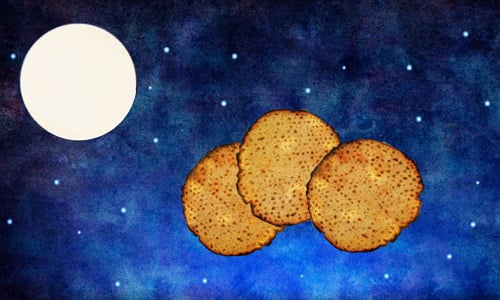
Taking hold of the three matzahs (with the broken one between the two whole ones), recite the customary blessing before bread. Then, letting the bottom matzah drop back onto the plate, and holding the top whole matzah with the broken middle one, recite the special blessing “al achilat matzah.” Then break a bit of the upper matzah and at least one ounce from the middle matzah (ideally an ounce from each), and eat the two pieces together while reclining.
9. Maror—the Bitter Herbs
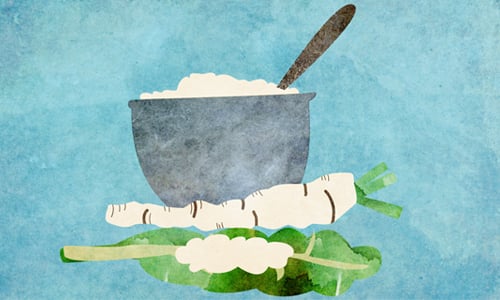
Take at least one ounce of the bitter herbs. Dip it in the charoset, then shake the latter off and make the blessing “al achilat maror.” Eat without reclining.
10. Korech—the Hillel Sandwich

In keeping with the practice of Hillel, the great Talmudic sage, a sandwich of matzah and maror is eaten. Break two pieces off the bottom matzah, which should be at least one ounce together. Again, take at least one ounce of bitter herbs and dip them in the charoset, which is shaken off. Place this between the two pieces of matzah, say “kein asah Hillel…,” and eat the sandwich while reclining.
11. Shulchan Orech—the Passover Feast

The holiday dinner is now served. We begin the meal by eating the hard-boiled egg dipped into salt water. Traditionally associated with mourning, the egg reminding us that our meal lacks the sacrificial lamb.
Note: The zeroa (the leg of lamb or chicken leg or neck on the Seder plate), is not eaten at the Seder.
12. Tzafun—Out of Hiding

After the meal, the half-matzah that had been “hidden” and set aside for the afikoman (“dessert”) is taken out and eaten. It symbolizes the Paschal lamb, which our ancestors ate at the end of their Passover Seders.
Everyone should eat at least 1½ ounces of matzah, reclining, before midnight. After eating the afikoman, we do not eat or drink anything except for the two remaining cups of wine.
13. Berach—Blessings After the Meal
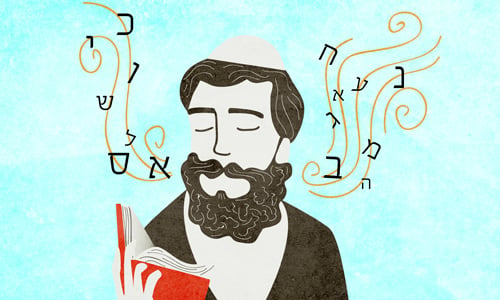
A third cup of wine is filled and Grace After Meals is recited. After the Grace, we recite the blessing over wine and drink the third cup while reclining.
Now we fill the cup of Elijah and our own cups with wine. We open the door and recite the passage inviting the Prophet Elijah, the harbinger of the coming of Moshiach, our righteous Messiah.
14. Hallel—Songs of Praise
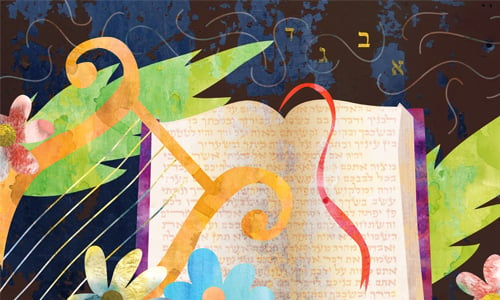
At this point, having recognized the Almighty and His unique guidance of the Jewish people, we go still further and sing His praises as L‑rd of the entire universe.
After reciting the Hallel, we again recite the blessing over wine and drink the fourth cup, reclining.
15. Nirtzah—Acceptance
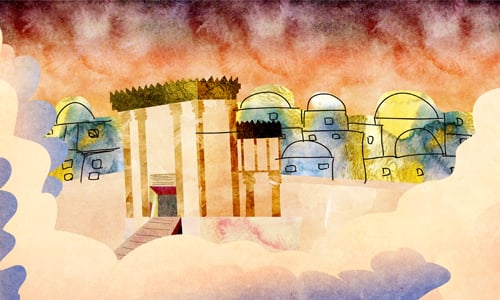

No comments:
Post a Comment